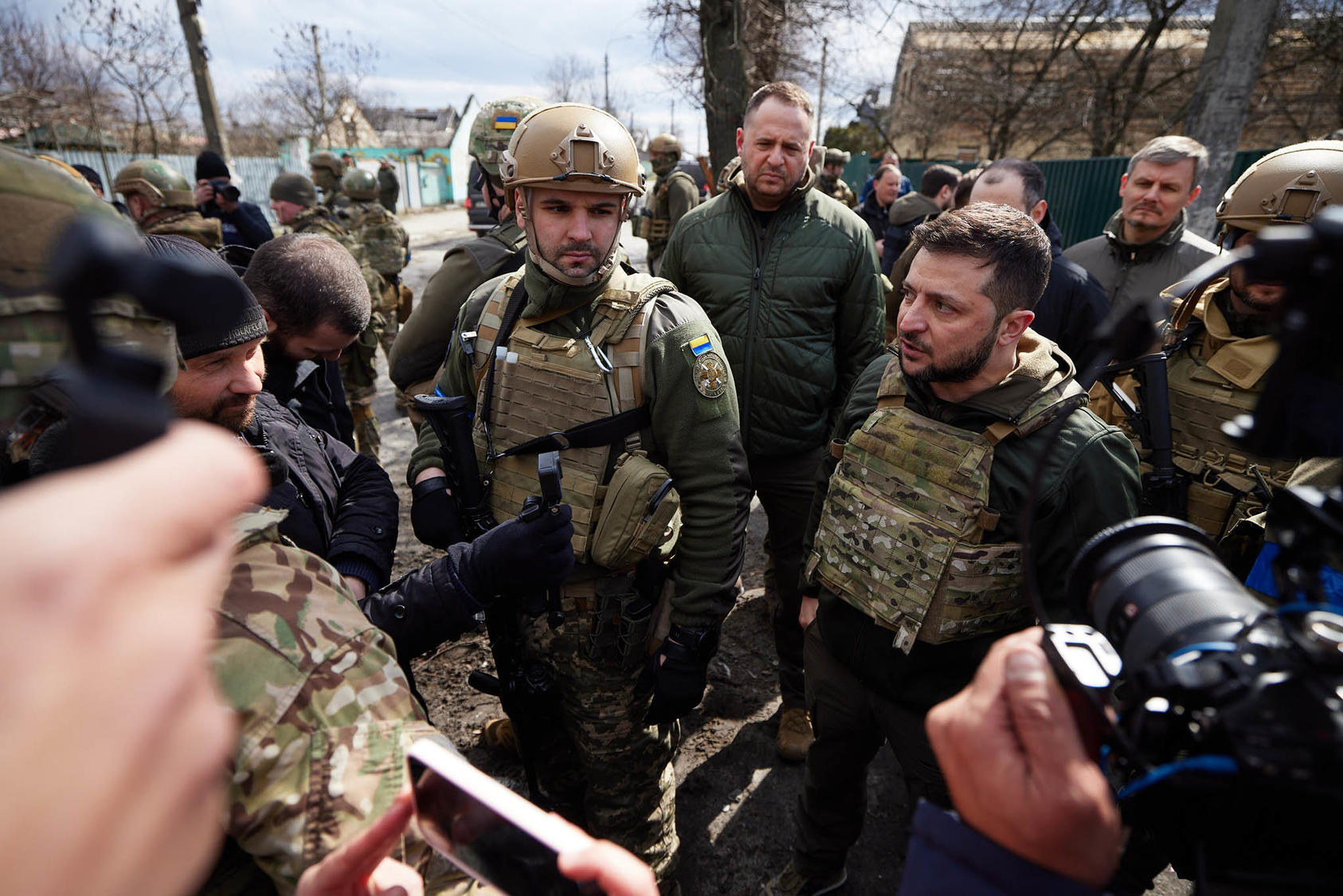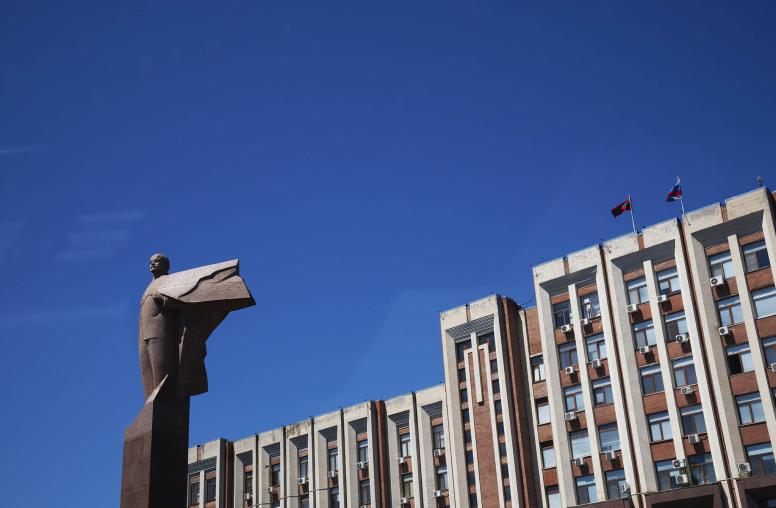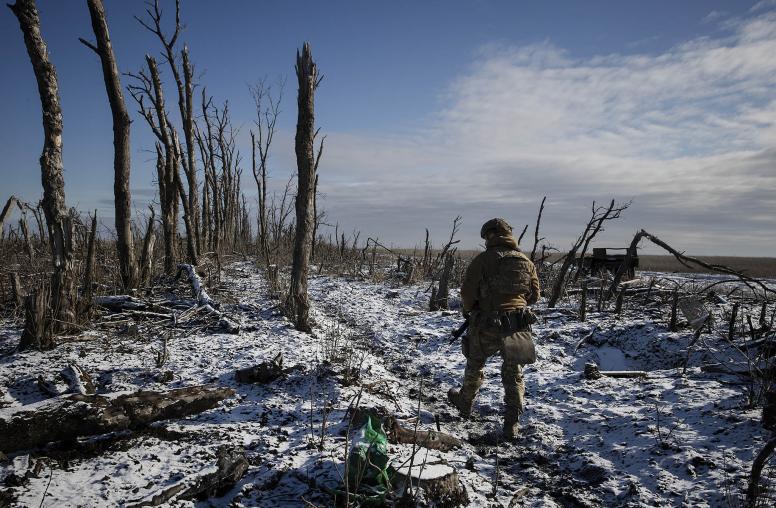Russia’s War on Ukraine: How to Get to Negotiations
As Ukrainians choose when to hold peace talks, here is the support they will need.
President Volodymyr Zelenskyy has said that Ukraine will negotiate with Russia when Ukrainian forces have pushed Russian army back to their positions of February 24, the day President Vladimir Putin initiated its latest war of aggression against Ukraine. The decision on when and how to negotiate rests entirely with Ukraine. But the United States and other allies can provide the support Ukrainians need in that process. What would that support look like?

Avenues for U.S. Support
U.S. support should be military, financial and political.
Military. To enable Ukraine to push the Russian forces back to the February 24 lines and to put it in the best position to negotiate, the United States, NATO allies and others must dramatically accelerate the flow of sophisticated weapons to Ukraine. These must include long-range rocket artillery, high-altitude anti-aircraft and anti-missile weapons, and massive quantities of ammunition for these and for the new artillery pieces now on the front lines. It must include fuel for tanks and aircraft. It must include body armor and first aid kits for soldiers. It must include training and intelligence. The United States and NATO allied governments are providing this support, but it must get there faster. This would enable the Ukrainian military to stop the Russian advance and to mount a counteroffensive this summer.
Financial. As important as weapons will be financial support. To put itself in a strong position to negotiate with the Russians, Ukraine must maintain a viable government, paying soldiers and government workers. Yet Russia, aiming to eliminate Ukraine as a nation, is destroying cities, railroads, bridges, hospitals, schools, government offices, industry, farms, ports — the lifeblood of Ukraine’s economy. These attacks are cutting the Ukrainian economic output nearly in half. People are unemployed, their homes destroyed. Tax revenues have fallen dramatically. To keep schools, hospitals, police and the army functioning, the government in Kyiv needs financial support that Zelenskyy has estimated at $5 billion monthly. The United States has committed $54 billion overall to aid for Ukraine. This immediate funding must be followed by a massive reconstruction effort. A large down payment on this financing — both short-term budget support and longer-term reconstruction financing — should come from the $300 billion in Russian central bank reserves that are frozen in the banks of the Group of Seven (G-7) countries.
Political. To negotiate with the Russians, the Ukrainians will need several forms of political support. First, they need to go into negotiations confident that they will be able, in the future, to live in security, free of threat of further Russian invasion. The Ukrainians have learned — the hard way — that written promises from the Russians to respect its sovereignty and territorial integrity are worthless. In 1994, Ukrainians gave up the world’s third-largest arsenal of nuclear weapons upon the promise by Russia (and the United States and Britain) to guarantee Ukrainian security. In 2014 and again in 2022 the Russians invaded.
To be sure it will be secure in the future, Ukraine either needs to be accepted into NATO or it must be fully able to defend itself. The Russians are neither going away nor giving up their goal to eliminate Ukraine from the map. While the debate on NATO membership drags on (NATO promised in 2008 that Ukraine would someday be a member), the United States should commit to provide Ukraine with state-of-the-art weapons, starting now. This commitment need not be a treaty. It could take the form of an ongoing commitment by the U.S. government — Congress and administration — that would be worked out bilaterally, specifying types and delivery dates of weapons. The United States and Israel have a similar arrangement, codified in a memorandum of understanding signed by both sides. (The most recent version of this memorandum commits the United States over 10 years to provide Israel with $38 billion in advanced military capabilities.)
Also, Israel is a major non-NATO ally of the United States. While the debate on NATO membership for Ukraine goes on, the United States should designate Ukraine a major ally as well. This would make clear the close military and political relationship between the United States and Ukraine and boost Ukraine’s leverage in any negotiations with Russia.
The United States must continue to lead and strengthen the broad coalition of democracies that has united to provide military equipment to Ukrainians and impose sanctions on Russia…
Second, the United States must continue to lead and strengthen the broad coalition of democracies that has united to provide military equipment to Ukrainians and impose sanctions on Russia, notably to deny it high-technology components needed to equip its war machine. NATO nations, the European Union, the G-7 and East Asian nations have come together in an unprecedented display of resolve to support Ukraine and hold Russia accountable for its crimes of aggression and atrocities. This alliance has been key to Ukraine’s success so far.
The leaders of these nations and organizations need to continue to make the case to their publics that the defense of a rules-based order that can keep the peace and enable prosperity is crucial for global well-being. To broaden this coalition, U.S. policy must sustain two messages: that protecting Ukrainians’ right to self-determination is what protects that right for all nations, and that a stronger rules-based order also means ending the under-representation of many parts of the global south in governing our international institutions.
Third, the United States and its allies need to reinforce the policy that Ukraine should enter negotiations only when Ukrainians determine they make sense. No nation should apply pressure — or even make suggestions — for another nation, especially one fighting for its very existence, to give up sovereign territory. Ukrainians will decide these questions. They and President Zelenskyy have been clear: They will not.
Alongside that stance, the United States should remain clear about its willingness to negotiate with Russia on conventional and nuclear weapons in Europe. If the Russians have legitimate concerns for their own security that can be addressed by NATO and the rest of Europe, Washington should offer to sit down to negotiate — separately from the Ukraine-Russia negotiations, of course, but perhaps in parallel. For example, if the Russians are concerned that NATO might put nuclear weapons in Ukraine, NATO could agree not to do so — if the Russians made reciprocal commitments not to put nuclear weapons near NATO borders. Similarly, if the Russians wanted U.S. bombers to fly no closer than some specified distance from Russian borders, the United States could agree — again, if the Russians made reciprocal commitments.
Finally, the United States should declare its intent that the sanctions and export controls imposed on Russians and Russia will remain indefinitely and that it could consider relaxing some sanctions only in close consultation with the Ukrainian government and other Western allies.
If the United States and its Western allies provide sufficient military, financial and political support to Ukraine, President Zelenskyy and the Ukrainian people will have the ability to negotiate an end to the war, at a time of their choosing.


